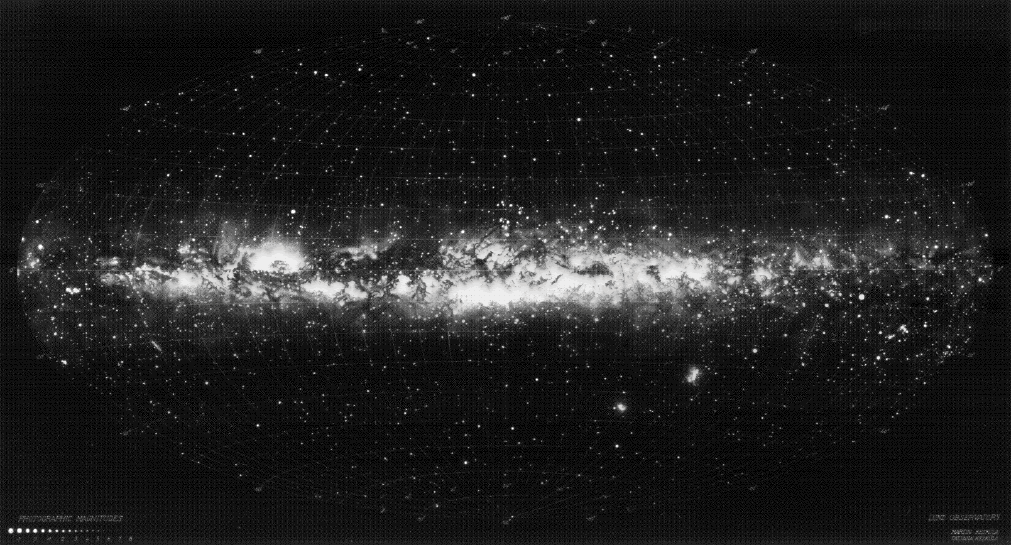ASTR 1230 (O'Connell) Lecture Notes
Our Galaxy from the Inside

-
 Here is a labeled version of the panorama
with some important signposts marked.
Here is a labeled version of the panorama
with some important signposts marked.
- Sagittarius and Scorpio are in the center of the image, but their bright stars are mostly hidden in the glow of the light of millions of fainter stars in the plane.
- The brightest star in the image is Sirius, lying just below the plane near the right hand edge of the image. Orion lies to the right and below Sirius, tilted toward the right. You can see the three stars of Orion's belt pointing at Sirius. Directly across (above) the plane from the belt are Castor and Pollux, the two brightest stars in Gemini.
- The part of the Milky Way that is visible in the summer sky runs from the center to about 3/4 of the way to the left hand edge. Vega and its constellation Lyra can be seen lying above the plane about halfway from the center to the left hand edge. Cygnus is in the Milky Way, just below and left of Lyra.
- The three stars at the extreme left hand edge of the image, just
above the plane, are in Auriga. The brightest is
Capella. This section of the Milky Way is visible in autumn
and winter.
-
Click here for a wide angle picture
of the northern Milky Way with the bright constellations identified.
- The two cloudy patches below the plane and just right of center are the Magellanic Clouds (only visible from the southern hemisphere). They are external galaxies. M31, the bright galaxy in Andromeda, is visible as a streaklike feature below the plane about 1/6 of the way from the left hand edge.
 Return to Lecture 6
Return to Lecture 6
|
Last modified December 2020 by rwo